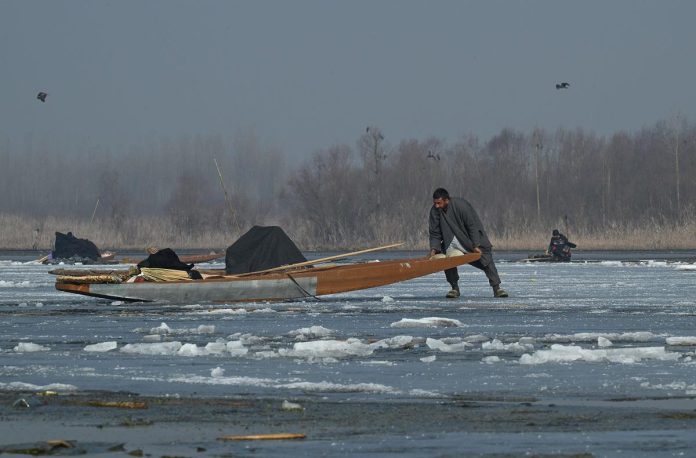Srinagar, Jan 10: The minimum temperature on Friday was minus 4.3 degrees Celsius in Srinagar and minus 10 degrees Celsius in Pahalgam, indicating that a cold wave was still sweeping through Jammu and Kashmir (J&K).
According to MET department officials, J&K is still experiencing a cold wave, and because of the clear night sky, the minimum temperature may drop even lower.
There was a minimum temperature of 4.3 degrees Celsius in Srinagar, 8.1 degrees Celsius in Gulmarg, and 10 degrees Celsius in Pahalgam on Friday.
There was a minimum temperature of 4.3 degrees Celsius in Srinagar, 8.1 degrees Celsius in Gulmarg, and 10 degrees Celsius in Pahalgam on Friday.
It was 4.9 degrees Celsius in Jammu City, 6.1 degrees in Katra Town, 4.9 degrees in Batote 3, 4.9 degrees in Banihal, and 0 degrees Celsius in Bhaderwah at night.
According to a statement from the MET office, “January 10th saw mostly dry weather with cloudiness during the 10th evening and night.”
On January 11, it was mostly cloudy with light rain in the Jammu plains and snow in a few isolated higher areas of the Jammu and Kashmir divisions.
The weather is usually dry from January 12 to 14. January 15–16 are typically overcast days with sporadic to isolated snowfall.
Warning: Isolated areas may experience a cold wave. Travelers, tourists, and drivers are urged to abide by traffic and administration regulations.
The “Chillai Kalan,” as it is known locally, is a 40-day period of extreme winter cold that began on December 21 and will conclude on January 30.
The majority of the Valley’s bodies of water, including lakes, streams, ponds, and wells, have partially frozen.
Movement of cars and pedestrians was severely restricted in the Valley due to the morning fog and cold.
Since prolonged exposure to cold can result in hypothermia and blood vessel constriction, doctors have advised people, particularly children and the elderly, to avoid it. This is the primary cause of heart attacks and heart failures in colder nations during the winter.
Two popular items in the Valley during the long winter months are an earthen firepot woven in a willow wicker basket known as the “Kangri” and a loose tweed overgarment known as the “Pheran.”
Tailors have created Pherans in a variety of designs and styles to fit office workers. Consequently, over the years, Pheran has emerged as a popular winter garment across the nation.




